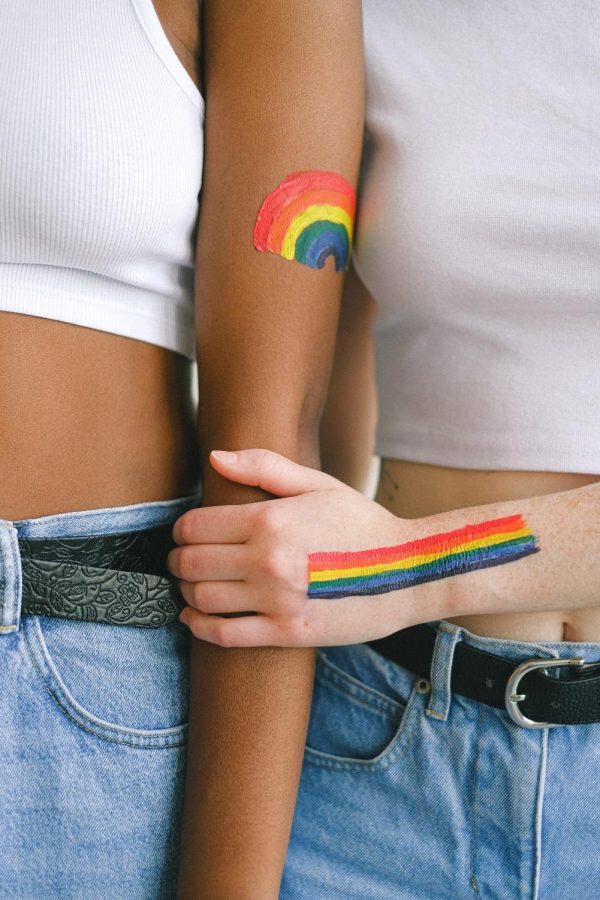Slomka: Pronouns are for everyone
Aug 27, 2020
While the word “pronoun” has become linked to the transgender community, this isn’t an entirely fair connection– everyone uses pronouns, whether they realize it or not. He, she, they, it, I, you– pronouns are an integral part of our language. Essentially, a pronoun is a word that is used as a substitute for a noun, usually to prevent repetition in our speech. While some pronouns are genderless (such as I, you, and it), pronouns such as he and she are directly associated with one’s gender, and naturally, people typically prefer to be referred to by pronouns congruent with their gender identity (for example, most men prefer he/him pronouns and most women prefer she/her pronouns). Of course, not everyone presents themselves in a way that is congruent with their gender identity (this is known as being gender-nonconforming), and this means that we can’t always assume what pronouns an individual would like to be referred to as. For example, butches are women (usually lesbian or bisexual, though straight butches exist as well) who choose to present themselves in a traditionally-masculine way, but who still identify as women and typically use she/her pronouns, though one may instinctively use masculine pronouns when seeing someone who presents themselves in a traditionally-masculine way.
This issue also extends to nonbinary people (people who do not identify as male or female), many of whom do not use feminine or masculine pronouns and may prefer to use they/them, or perhaps a neopronoun (pronouns developed in the 19th or 20th centuries that are not yet considered standard English) such as ze/zir or per/pers. Given the gray area of personal pronouns, how do you know how to respectfully refer to people?
Openly and clearly stating one’s pronouns was normalized by the LGBT+ community as a way to prevent the misgendering of gender-nonconforming and transgender individuals, both of whom can suffer greatly from regular misgendering. A study by Irene J Dolan et al. finds that regular misgendering “negatively affects the mental and physical health of trans individuals.” Starting a dialogue about gender identity and how we prefer to be referred to as is a good way to combat misgendering and prevent miscommunications, whether we say our pronouns out loud when introducing ourselves, put them on our nametag at work, or include them in our email signature. Until recently, this was a practice mostly confined to the LGBT+ community, but in recent years, it has become increasingly common for non-LGBT+ individuals to be clear about the pronouns they prefer.
The practice of stating one’s pronouns mostly began as an act of allyship with the LGBT+ community and a way to promote inclusivity. When one lists their pronouns in their email signature or Twitter bio, it shows that they care about your comfort and are willing to refer to you by the pronouns you choose, and when this act is performed in the workspace, it demonstrates that it is a work environment that stands by its LGBT+ employees and customers, asserting it as a safe space. When only transgender people list their pronouns, it outs them as being trans, which can be dangerous in certain situations. However, when this act becomes normalized and performed by everyone, trans or not, it allows transgender people to safely assert how they’d like to be referred to as without necessarily forcing them to out themselves. This action further asserts that transgender people are normal people, and that their demands to be respected are valid.
Starting a dialogue about pronouns and gender identity may seem daunting, but in actuality, it’s quite simple. When you introduce yourself to someone new, you may choose to list your pronouns right off the bat (“Hey, my name’s Emerson; I use he/him pronouns. What’re your name and pronouns?”) You can list your pronouns on your social media bios and in your email signature so that those you correspond with know what to call you. You can wear a pronoun pin or button on your shirt, hat, or bag so that people know your pronouns before even speaking to you. These are all great ways to normalize the discussion and use of pronouns, and can help make those around you know that you respect their identities, and help them know how you identify as well.
The link between pronouns and the transgender community is apparent (and can be exemplified by Elon Musk’s July 24 tweet “Pronouns suck”– does he really take issue with grammar, or is his problem with transgender people?), but in reality, we all use pronouns, and they’re inseparable from us and the way we see ourselves. Normalizing the discussion of pronouns is integral to combatting miscommunications and misgendering.








